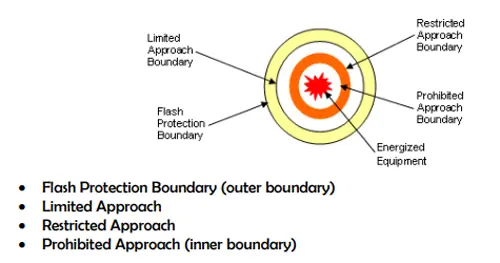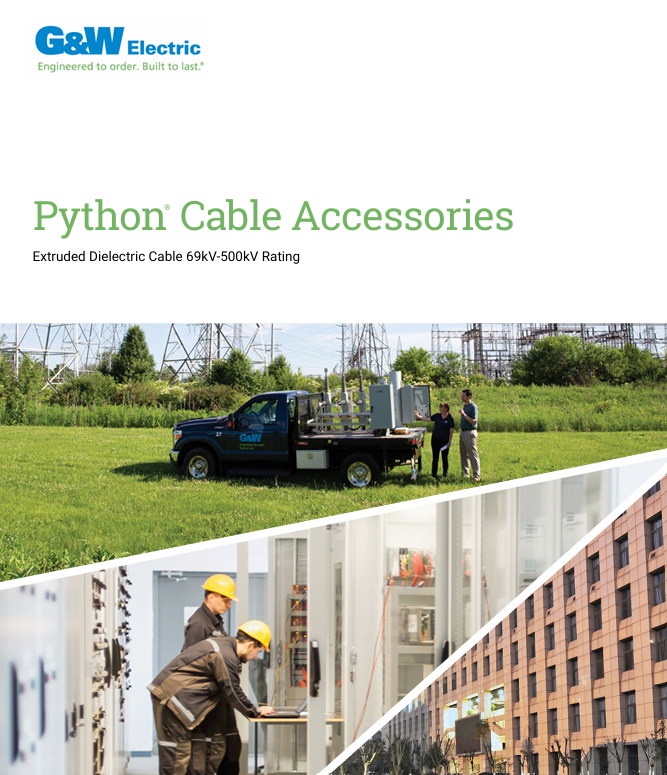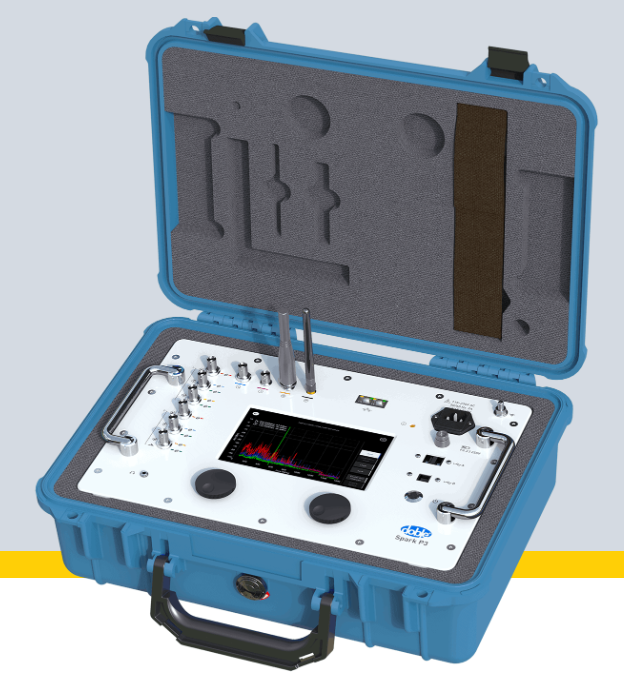The Three Limits of Approach Boundaries Are
By R.W. Hurst, Editor

CSA Z462 Arc Flash Training - Electrical Safety Essentials
Our customized live online or in‑person group training can be delivered to your staff at your location.

- Live Online
- 6 hours Instructor-led
- Group Training Available
Download Our OSHA 3875 Fact Sheet – Electrical PPE for Power Industry Workers

- Follow rules for rubber gloves, arc-rated PPE, and inspection procedures
- Learn employer obligations for testing, certification, and training
- Protect workers from arc flash and electrical shock injuries
The three limits of approach boundaries are Limited, Restricted, and Prohibited, defining safe distances from energized electrical parts to reduce shock hazards and meet NFPA 70E safety requirements.
What Are The Three Limits of Approach Boundaries?
The three limits of approach are designed to protect workers from electrical hazards, specifically shock and arc flash. These are:
✅ Limited Approach Boundary – minimum safe distance to reduce shock risk for qualified and unqualified persons
✅ Restricted Approach Boundary – closer limit requiring additional protective measures and PPE
✅ Prohibited Approach Boundary – closest limit treated as direct contact with energized parts
Reviewing the arc flash boundary chart can help safety managers compare shock protection distances with thermal hazard limits.
1. Limited Approach Boundary
The limited approach boundary is the outermost zone and marks the distance from an exposed energized conductor or circuit part where a shock hazard exists. While unqualified personnel cannot cross this boundary unless escorted by a qualified person, qualified workers may enter this zone wearing appropriate voltage-rated shock protection equipment. The limited approach boundary is typically determined based on the system's voltage level and specific safety requirements. The Limited Approach Boundary is the outermost shock protection zone, restricting access for unqualified personnel without a qualified escort.
How to determine the limited approach boundary
The limited approach boundary can be calculated using tables provided in NFPA 70E, which consider factors such as voltage level and the presence of insulating materials. In general, the higher the voltage, the greater the distance required for the limited approach boundary.
2. Restricted Approach Boundary
The restricted approach boundary lies within the limited approach boundary and signifies an increased risk of shock due to potential arc-over or inadvertent movement. Only qualified workers may enter this zone, and they must utilize additional shock protection measures, such as insulated tools or equipment, in addition to their voltage-rated PPE. The Restricted Approach Boundary is closer to energized parts, requiring additional PPE and insulated tools for safe entry.
Sign Up for Electricity Forum’s Arc Flash Newsletter
Stay informed with our FREE Arc Flash Newsletter — get the latest news, breakthrough technologies, and expert insights, delivered straight to your inbox.
How to determine the restricted approach boundary
The restricted approach boundary is typically determined by the specific task being performed and the associated risk factors. Factors such as the voltage level, equipment configuration, and working conditions are considered when establishing this boundary.
3. Prohibited Approach Boundary
The prohibited approach boundary is the innermost zone, representing the closest distance a person can approach an exposed energized part without making direct contact. Entry into this zone is strictly limited to qualified workers with specific training and authorization, who must follow rigorous safety procedures. Additionally, they must wear appropriate PPE, including arc flash protection equipment, to safeguard against the potential energy released during an arc flash incident. Understanding prohibited approach boundary requirements is critical, as this zone is treated the same as direct contact with live parts.
How to determine the prohibited approach boundary
The prohibited approach boundary is established based on the results of an arc flash hazard analysis. This analysis calculates the incident energy, measured in calories per square centimetre (cal/cm²), at various distances from the exposed live part. The distance at which the incident energy reaches a level that would cause a second-degree burn (typically 1.2 cal/cm²) is considered the flash protection boundary, which often coincides with or is used to establish the prohibited approach boundary.
How to Determine the Limited Approach Boundary?
The limited approach boundary is determined based on the nominal system voltage. NFPA 70E provides tables that specify the distances for different voltage levels. For instance, for systems operating at 50 volts to 750 volts, the limited approach boundary is typically set at 3 feet 6 inches. This boundary ensures that unqualified persons remain safe from energized components, reducing the risk of accidental contact.
How to Determine the Prohibited Approach Boundary?
The prohibited approach boundary is calculated to ensure that no part of the body or conductive object can come in close proximity to the exposed energized conductor or circuit part without adequate protection. This boundary is determined by considering the potential for arc flash hazards and the necessary incident energy calculations. For example, the prohibited approach boundary might be set at 1 inch for systems operating at 750 volts to 15,000 volts. This boundary is critical for ensuring the highest level of protection against direct contact with energized parts.
How to Determine the Restricted Approach Boundary?
The restricted approach boundary is determined based on the shock protection requirements and the nominal system voltage. NFPA 70E outlines specific distances for different voltage levels. For example, for systems operating at 50 volts to 750 volts, the restricted approach boundary is typically set at 1 foot. This boundary is essential for protecting workers from shock hazards, requiring specific PPE and work permits to enter.
Importance of Understanding and Implementing Boundaries
Understanding and properly implementing these approaches is crucial for maintaining electrical safety in the workplace. These zones help in:
-
Preventing Electrical Shocks: By maintaining a safe distance from exposed energized parts, the risk of electrical shocks is significantly reduced.
-
Ensuring Proper Use of PPE: The zone ensures that workers use the appropriate level of personal protective equipment (PPE) based on the incident energy levels.
-
Complying with Safety Standards: Adhering to NFPA 70E standards helps in maintaining compliance with national fire protection regulations and ensures a safe work environment. A thorough arc flash assessment will establish both the arc flash boundary and the appropriate approach boundaries for each piece of equipment.
The concept of approach boundaries is fundamental to electrical safety, providing a structured method for protecting workers from electrical hazards. By understanding the limited, restricted, and prohibited approach zone, workers can ensure their safety and comply with NFPA 70E standards. Proper training, use of PPE, and adherence to these zones are essential for preventing accidents and maintaining a safe working environment around energized electrical components.
FREE EF Electrical Training Catalog
Download our FREE Electrical Training Catalog and explore a full range of expert-led electrical training courses.

- Live online and in-person courses available
- Real-time instruction with Q&A from industry experts
- Flexible scheduling for your convenience







